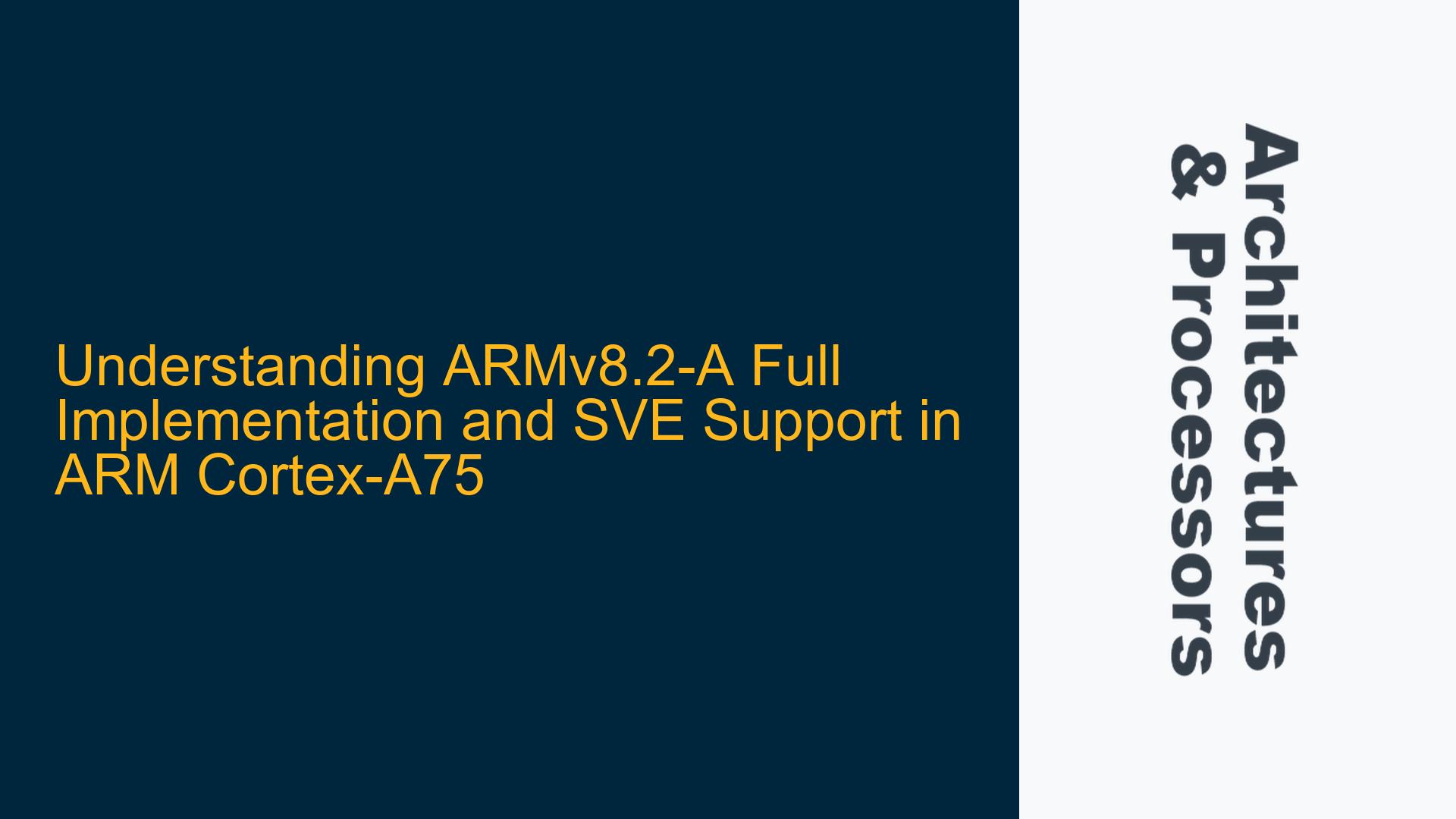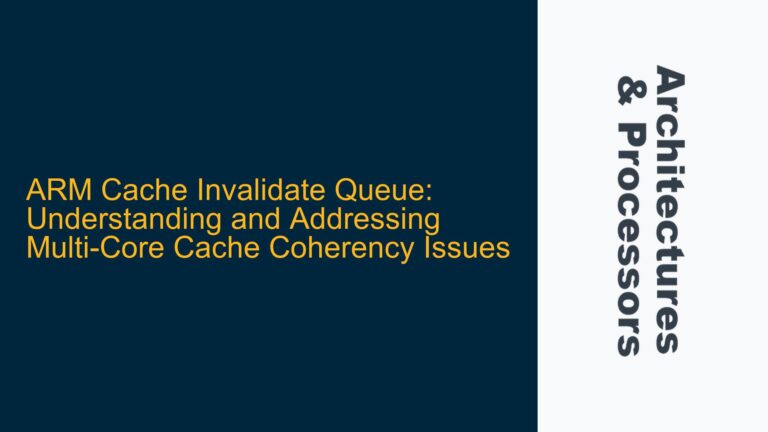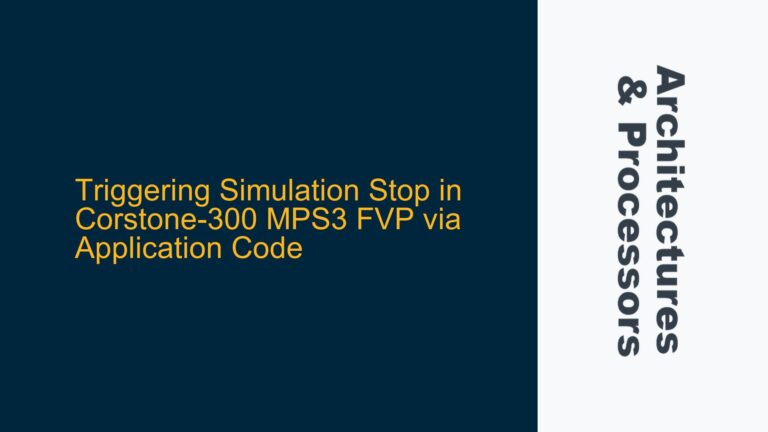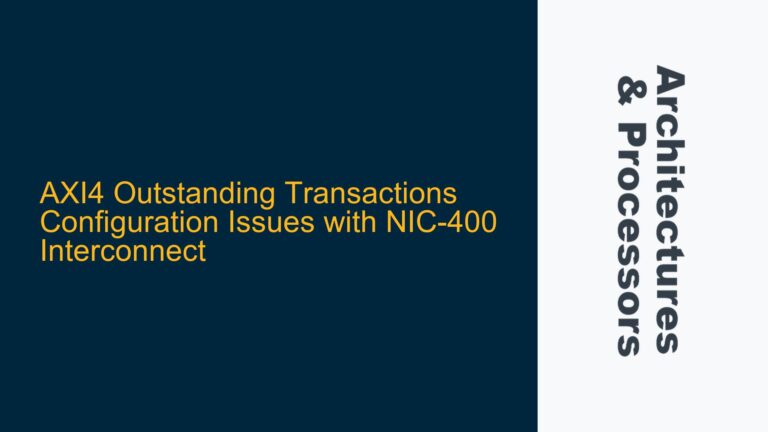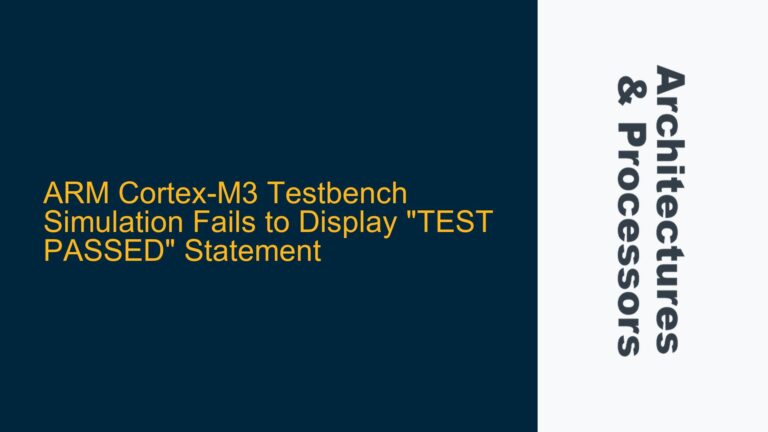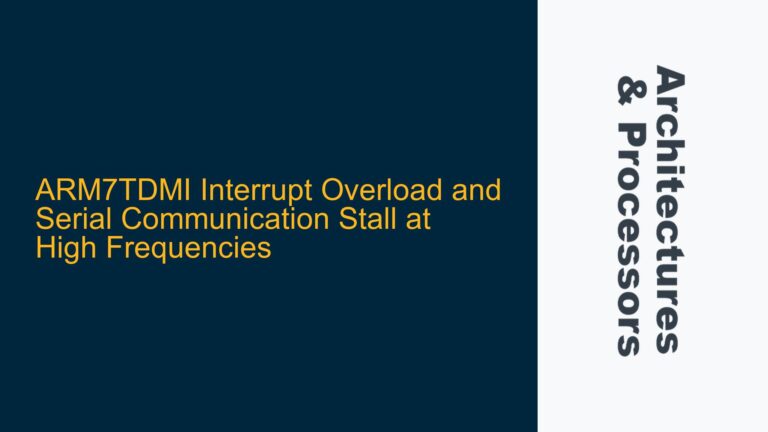ARMv8.2-A Architecture: Mandatory Features and Optional Extensions
The ARMv8.2-A architecture is an extension of the ARMv8-A architecture, introducing several mandatory features and optional extensions that enhance the capabilities of ARM processors. A full implementation of ARMv8.2-A requires compliance with both the mandatory architectural features and any additional requirements specified in the ARM Architecture Reference Manual. The mandatory features of ARMv8.2-A include enhancements to the SIMD (Single Instruction Multiple Data) and floating-point operations, particularly the introduction of FP16 (half-precision floating-point) arithmetic. This allows for more efficient processing of data in applications such as machine learning, image processing, and other compute-intensive tasks.
In addition to the mandatory features, ARMv8.2-A also introduces optional extensions, one of the most notable being the Scalable Vector Extension (SVE). SVE is designed to provide scalable vector processing capabilities, allowing for variable vector lengths that can be tailored to the specific needs of the application. This is particularly useful in high-performance computing (HPC) and machine learning workloads, where the ability to process large amounts of data in parallel is critical. SVE introduces several new features, including predicate registers, which allow for more efficient conditional execution of vector operations.
The ARM Cortex-A75, while claiming to support a full implementation of ARMv8.2-A, does not support the SVE extension. This is an important distinction, as SVE is an optional extension and not part of the mandatory features required for ARMv8.2-A compliance. The absence of SVE support in the Cortex-A75 means that developers working with this processor will not be able to take advantage of the advanced vector processing capabilities that SVE provides. However, the Cortex-A75 does support other features of ARMv8.2-A, such as FP16 arithmetic, which can still provide significant performance improvements in certain workloads.
Identifying SVE Support in ARM Processors
To determine whether a specific ARM processor supports the Scalable Vector Extension (SVE), developers can inspect the ID_AA64PFR0_EL1 register. This register contains information about the processor’s feature set, including whether SVE is supported. The ID_AA64PFR0_EL1 register is part of the ARMv8-A architecture and is used to provide a standardized way of querying the capabilities of the processor. By examining the value of this register, developers can determine whether the processor supports SVE and, if so, what specific features of SVE are available.
In the case of the ARM Cortex-A75, the ID_AA64PFR0_EL1 register does not indicate support for SVE. This is consistent with the information provided in the ARM documentation, which states that the Cortex-A75 does not support SVE. For developers who require SVE support, this means that they will need to consider other ARM processors that do support this extension, such as the Cortex-A76 or later models. It is important to note that SVE support is not universal across all ARMv8.2-A processors, and developers should always verify the specific capabilities of the processor they are working with.
The absence of SVE support in the Cortex-A75 does not mean that the processor is incapable of performing vector processing tasks. The Cortex-A75 still supports the Advanced SIMD (NEON) extension, which provides a fixed-width vector processing capability. While NEON does not offer the same level of flexibility and scalability as SVE, it can still be used to accelerate many types of vectorized workloads. Developers should carefully consider the specific requirements of their application when choosing between processors that support SVE and those that do not.
Optimizing Code for ARMv8.2-A Without SVE Support
For developers working with the ARM Cortex-A75 or other ARMv8.2-A processors that do not support SVE, there are still several strategies that can be employed to optimize code and take full advantage of the processor’s capabilities. One of the key features of ARMv8.2-A is the support for FP16 arithmetic, which can be used to improve the performance of applications that involve floating-point calculations. By using FP16 data types where appropriate, developers can reduce the amount of memory bandwidth required and increase the throughput of floating-point operations.
Another important consideration when optimizing code for ARMv8.2-A processors is the use of the Advanced SIMD (NEON) extension. While NEON does not provide the same level of flexibility as SVE, it can still be used to accelerate many types of vectorized workloads. Developers should ensure that their code is properly vectorized to take advantage of NEON’s capabilities. This may involve restructuring loops, using SIMD intrinsics, or employing auto-vectorization techniques provided by the compiler.
In addition to optimizing for FP16 and NEON, developers should also consider the overall architecture of the ARMv8.2-A processor when designing their software. This includes understanding the cache hierarchy, memory access patterns, and the impact of branch prediction on performance. By carefully considering these factors, developers can write code that is not only optimized for the specific features of the processor but also takes into account the broader architectural considerations that can impact performance.
Finally, developers should be aware of the tools and resources available to help optimize code for ARMv8.2-A processors. This includes profiling tools that can help identify performance bottlenecks, as well as compiler options that can enable or disable specific optimizations. By using these tools effectively, developers can ensure that their code is fully optimized for the ARMv8.2-A architecture, even in the absence of SVE support.
In conclusion, while the ARM Cortex-A75 does not support the Scalable Vector Extension (SVE), it still provides a full implementation of the ARMv8.2-A architecture, including support for FP16 arithmetic and the Advanced SIMD (NEON) extension. By understanding the specific capabilities of the processor and employing appropriate optimization strategies, developers can still achieve significant performance improvements in their applications. However, for those who require the advanced vector processing capabilities provided by SVE, it will be necessary to consider other ARM processors that support this extension.
